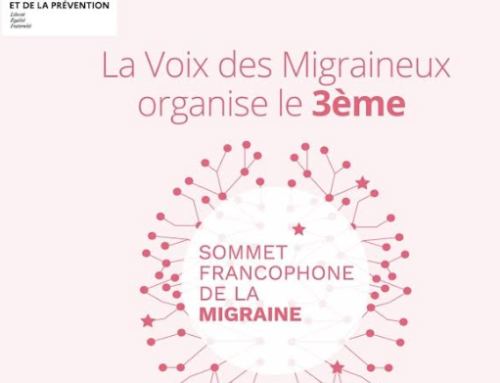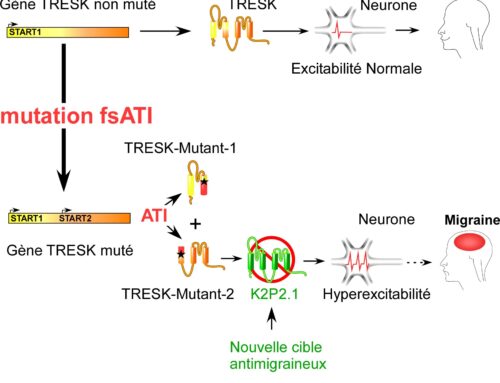Migraine and meditation
Migraine and meditation
According to the World Health Organization (WHO), migraine is the second most disabling disease in the world. According to this 1999 study conducted in the United States, two-thirds of migraine patients stop taking medications due to their ineffectiveness or their side effects. There is a significant need to find non-pharmacological treatments to alleviate the suffering of migraine patients.
The reduction of stress through meditation is sometimes presented as a real aid in alleviating chronic pain. Meditation could be particularly useful for migraines: it may reduce stress levels (one of the potential triggers for migraines) and could help decrease the intensity of pain experienced during attacks.
A study aimed at understanding the impact of meditation on migraines was conducted in the United States between 2016 and 2018 with 89 patients. To be recruited, these patients had to be diagnosed as migraine sufferers and experience between 4 and 20 days of migraines per month. To learn more about the subject, we have summarized the study for you.
The group consisted of 82.92% women, with an average age of 44 years. Participants were allowed to continue taking their acute and preventive migraine medications.
This group of 89 participants was divided into two:
The first group of 45 individuals was required to participate in a yoga and meditation program, with weekly 2-hour sessions over 8 weeks.
The second group of 44 people attended weekly 2-hour sessions of headache education classes. Participants in this second group received information about headaches, triggering factors, and various therapeutic approaches to migraine.
🧘♀️ How to measure the potential impact of meditation on migraine?
🧘♀️ How to measure the potential impact of meditation on migraine?
First, by measuring the frequency of migraine days per month and studying whether meditation has a positive or negative impact on migraine.
Also, by studying the evolution of the number of headache days, their intensities, discomfort, and durations. Reliable and scientifically validated survey instruments, such as the MIDAS or HIT-6 questionnaire, were completed at each study visit to assess headache-related disability, quality of life, and measures taken.
In this regard, you can also calculate the long-term impact of your migraine on your daily life through Apo. In the “Migraine Assessments” section on the home screen (if you don’t have this section on your home screen, update your application), you can respond to the HIT-6 and HAD questionnaires. The HIT-6 helps you describe and express what you feel and what you cannot do due to your headaches. The HAD is an instrument for evaluating the emotional impact of your migraine. After completing these two questionnaires, you receive scores that help your doctor better understand the impact of migraine on your daily, personal, social, and professional life and adapt the therapeutic approach.
For more information, don’t hesitate to consult the dedicated article on migraine impact assessments!
Moreover, and most importantly, you can record your complementary medicine practices on your migraine calendar. This way, you can visually and easily observe whether this regular practice has a positive impact on the frequency and intensity of migraine attacks. To learn how to do this, feel free to watch this short tutorial video:
🍀 Does meditation put an end to migraine?
🍀 Does meditation put an end to migraine?
- 🤓 First lesson from the study: Therapeutic education
Although the initial hypothesis of the study was that meditation could reduce the frequency of migraine attacks, the researchers had not considered that headache education could also have an impact on the frequency of attacks. Another clinical trial conducted in 2017 in the United States with 110 patients reportedly revealed that weight loss and headache education led to a decrease in the frequency of migraine attacks.
These results indicate that headache education can have a positive effect on the frequency of migraines. Understanding migraine can empower individuals to take action or make behavioral changes that can lead to a reduction in the frequency of migraine attacks.
With this in mind, the Apo Team provides articles on migraine in the app, and the association “La Voix des Migraineux” fills its website with content and organizes the French-speaking Migraine Summit. Feel free to visit the “La Voix des Migraineux” website and explore the articles provided by the Apo Team, such as migraine and sleep, migraine and yoga, menstrual migraines, and more.
- 😶🌫️ Meditation barely outperforms therapeutic education in reducing the frequency but has an impact on migraine’s effects.
At the end of the study, all participants in both groups showed a reduction in the number of migraine days per month.
However, the group that followed the meditation program showed improvements in terms of headache-related disability, quality of life, the long-term impact of pain, and emotional repercussions.
The study’s results revealed that individuals who participated in the meditation program reported a greater decrease in the perception of migraine-related disturbance and pain intensity. In contrast, the group following the migraine education program did not show any significant changes in this regard.
- ⚠️ The study has limitations
While the study’s results appear interesting, it’s essential to consider its limitations:
The study was conducted on a small population of fewer than 90 individuals.
The participants are very homogeneous (women, white, with higher education), making it difficult to draw conclusions for a diverse population.
The study was conducted between a test group and a comparative group (migraine education) rather than a placebo group.
👩⚕️ Conclusion
👩⚕️ Conclusion
To conclude, the French Society for the Study of Migraines and Headaches:
- Reminds that studies on the impact of meditation are of fairly low quality, too heterogeneous, and present risks of bias.
- However, suggests that behavioral therapies and stress reduction through mindfulness could be considered as additional therapy alongside medication for patients suffering from episodic or chronic migraines with a significant level of stress and/or anxiety.





